Swelling in the body occurs primarily as a result of inflammation, and can result from injuries and various maladies of the body, including pregnancy. When these conditions are left on their own without intervention, pain becomes worse, and injuries can become more severe.While there are many causes for swelling, your first line of defense should always be rest so the body can heal while swelling reduces. The less work you do for a few days, the better.
How to Reduce Swelling
1. Elevate the Injured Area
 Use your time when you can lay down as elevation helps to reduce swelling. What is happening with an injury is, blood is rushing to the injured area and this is good, but sometimes it goes so fast, it causes extreme inflammation and pain. When you are able to rest and elevate the arm or leg which is injured, you reduce the amount of blood collecting in the area and thus alleviate any potential blood clots and increased inflammation and pain. Sometimes a sling may be helpful for arms. The general idea is to elevate the injured body area above the heart. This will reduce the blood pressure in the area and help modulate inflammation.
Use your time when you can lay down as elevation helps to reduce swelling. What is happening with an injury is, blood is rushing to the injured area and this is good, but sometimes it goes so fast, it causes extreme inflammation and pain. When you are able to rest and elevate the arm or leg which is injured, you reduce the amount of blood collecting in the area and thus alleviate any potential blood clots and increased inflammation and pain. Sometimes a sling may be helpful for arms. The general idea is to elevate the injured body area above the heart. This will reduce the blood pressure in the area and help modulate inflammation.
2. Get a Massage
 Appropriately targeted massage delivered by a licensed neuromuscular massage therapist will help rapidly diminish inflammation and swelling of an injured area of the body. These are specially trained therapists who can determine exactly how fluids must flow and what optimal nerve flow will be to support natural healing. It is not advised to try to give yourself a massage, as you may be exacerbating the injury.
Appropriately targeted massage delivered by a licensed neuromuscular massage therapist will help rapidly diminish inflammation and swelling of an injured area of the body. These are specially trained therapists who can determine exactly how fluids must flow and what optimal nerve flow will be to support natural healing. It is not advised to try to give yourself a massage, as you may be exacerbating the injury.
3. Rub Mustard Oil
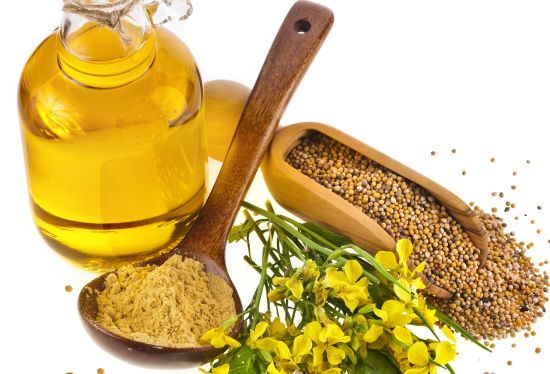 This is such a fantastic solution, the virtues cannot be overstated. As most swelling is due to poor blood circulation, rubbing mustard oil to the affected area for about five to seven minutes can help to relieve inflammation and reduces swelling rapidly.You could be looking at how to reduce swelling in one of the best ways here.
This is such a fantastic solution, the virtues cannot be overstated. As most swelling is due to poor blood circulation, rubbing mustard oil to the affected area for about five to seven minutes can help to relieve inflammation and reduces swelling rapidly.You could be looking at how to reduce swelling in one of the best ways here.
4. Apply Cold and Hot Compresses
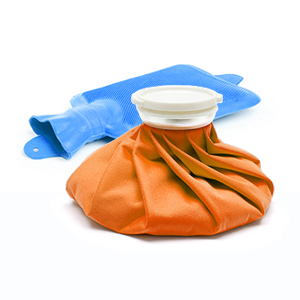 Both cold and hot compresses can help reduce swelling. Generally, when an injury is new, you will want to use cold compresses to reduce swelling and couple it with elevation of the injured area. Do not keep the cold compress constant. Keep it on for 15 minutes and off for ten and repeat. Continually renew the ice. The object is to reduce swelling and pain, not to freeze the area. When the swelling goes down, muscle tension becomes the predominant pain, and this is best relieved with warm compresses or hot ones. These can be used continuously to relieve pain and improve circulation.
Both cold and hot compresses can help reduce swelling. Generally, when an injury is new, you will want to use cold compresses to reduce swelling and couple it with elevation of the injured area. Do not keep the cold compress constant. Keep it on for 15 minutes and off for ten and repeat. Continually renew the ice. The object is to reduce swelling and pain, not to freeze the area. When the swelling goes down, muscle tension becomes the predominant pain, and this is best relieved with warm compresses or hot ones. These can be used continuously to relieve pain and improve circulation.
5. 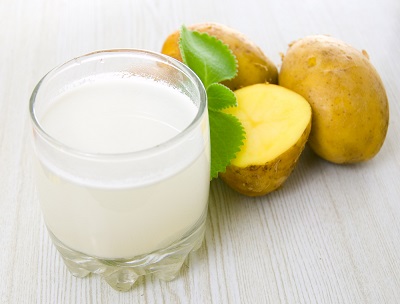 Use Potato Juice
Use Potato Juice
Some people use potato slices applied around a swollen area, fixed with gauze for an hour at a time to bring down swelling. It seems to work for many, as it draws excess sodium from the area. This is one of the modes of how to reduce swelling. Also, you can use a juicer and drink 4 ounces of potato juice to help as well.
6. Drink Water
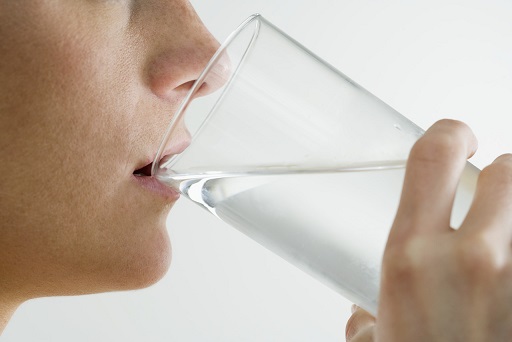 Always drink plenty of water, even when not injured. 10-12 glasses of water would make a great difference, especially when water retention is the cause of your condition. Your body will start storing water if it feels that you are dehydrated and excessive storage will lead to swelling. Increasing your water intake will help remove toxins and keep you hydrated, supporting a healthy inflammatory process.
Always drink plenty of water, even when not injured. 10-12 glasses of water would make a great difference, especially when water retention is the cause of your condition. Your body will start storing water if it feels that you are dehydrated and excessive storage will lead to swelling. Increasing your water intake will help remove toxins and keep you hydrated, supporting a healthy inflammatory process.
7. Perform Low-Impact Exercise
 When you are injured and swelling is being experienced with pain, exercise will be important. Hitting the gym with spin classes and full-blown weight training is a bad idea. That will cause more harm than good. One of the best low-impact exercises of benefit to consider is yoga when you need to learn how to reduce swelling. This will help you regain muscular control and easily reduce swelling while regaining strength at your own pace. Sign up for some basic yoga classes and get started at a slow pace. This teaches you self-healing and shall serve you for a lifetime.
When you are injured and swelling is being experienced with pain, exercise will be important. Hitting the gym with spin classes and full-blown weight training is a bad idea. That will cause more harm than good. One of the best low-impact exercises of benefit to consider is yoga when you need to learn how to reduce swelling. This will help you regain muscular control and easily reduce swelling while regaining strength at your own pace. Sign up for some basic yoga classes and get started at a slow pace. This teaches you self-healing and shall serve you for a lifetime.
8. Try Salt Solution
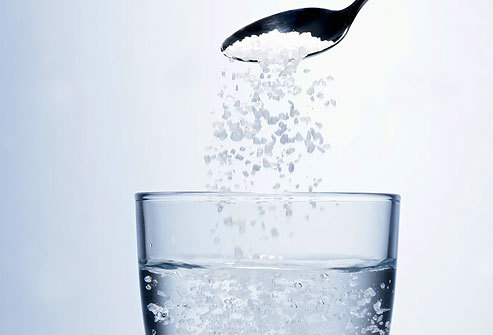 A salt solution may be applied to the area of swelling. You may use regular salt or Epsom salts as a warm to hot compress to help reduce swelling and provide pain relief. Also, Epsom salt or regular salt baths provide profound relief for swelling. This is all good relief and therapy for the healing cycle and all about electrolyte balance. You will sleep better, have less pain, and feel more relaxed.
A salt solution may be applied to the area of swelling. You may use regular salt or Epsom salts as a warm to hot compress to help reduce swelling and provide pain relief. Also, Epsom salt or regular salt baths provide profound relief for swelling. This is all good relief and therapy for the healing cycle and all about electrolyte balance. You will sleep better, have less pain, and feel more relaxed.
9. Minimize Your Sodium Intake
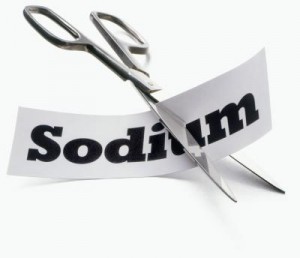 When it comes to how to reduce swelling, minimizing sodium intake is a great choice. This is true, as the standard American Diet (SAD) is characterized by a tremendous intake of sodium and a low intake of potassium. The two minerals actually modulate one another. In terms of recovery from injury, the focus should be two-fold: minimize sodium intake and maximize potassium intake through increased fruit consumption. Prime sources for potassium include citrus fruits, raisins, orange juice, coconut water, and vegetable juices. Only potassium will push sodium out of the body.
When it comes to how to reduce swelling, minimizing sodium intake is a great choice. This is true, as the standard American Diet (SAD) is characterized by a tremendous intake of sodium and a low intake of potassium. The two minerals actually modulate one another. In terms of recovery from injury, the focus should be two-fold: minimize sodium intake and maximize potassium intake through increased fruit consumption. Prime sources for potassium include citrus fruits, raisins, orange juice, coconut water, and vegetable juices. Only potassium will push sodium out of the body.
10. Take Medications
 There are the NSAIDs, or non-steroidal anti-inflammatory medications. Available over the counter are: Ibuprofen and Naproxen. Ibuprofen has a duration of action lasting 6-8 hours with a dosage range of 200-800mg and Naproxen has a duration of action lasting 12-16 hours with a dosage range 0f 225-550mg. There is a common misconception that Acetaminophen is also anti-inflammatory and it is not. It merely stalls the perception of pain in the brain and you can take no more than 4grams in 24 hours or you risk liver failure. Take these medications only as indicated on the box or as prescribed by a physician.
There are the NSAIDs, or non-steroidal anti-inflammatory medications. Available over the counter are: Ibuprofen and Naproxen. Ibuprofen has a duration of action lasting 6-8 hours with a dosage range of 200-800mg and Naproxen has a duration of action lasting 12-16 hours with a dosage range 0f 225-550mg. There is a common misconception that Acetaminophen is also anti-inflammatory and it is not. It merely stalls the perception of pain in the brain and you can take no more than 4grams in 24 hours or you risk liver failure. Take these medications only as indicated on the box or as prescribed by a physician.
When to See a Doctor
Localized swelling from an injury may be treated with home care, but if you've tried the above steps and haven't seen reduced swelling after a few days, it's time to see a doctor and make sure there isn't any underlying condition. Always call a doctor if you are experiencing additional symptoms like fever, warmth in the swollen area, or have any chest pain trouble breathing.
If you are pregnant and present with swelling, see a physician. Similarly, if you are taking medications and suddenly present with swelling, or if you had a recent injury and a limb or digits become painfully swollen, see a doctor. If any unusual swelling or pain occurs, see a physician immediately.
